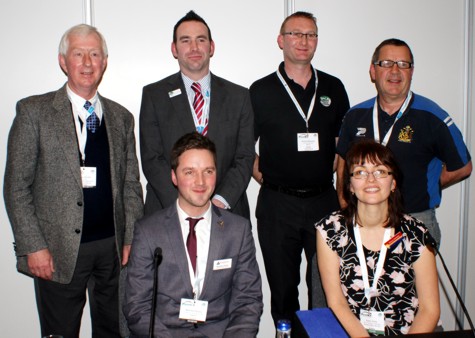Understandably, in view of the question marks still hanging over the role that second generation anticoagulant rodenticides (SGARs) will play in the future of rodent control, rodent control topics were to the fore at PestEx 2015. Key amongst them was the session on the UK SGAR Stewardship regime and it drew a good crowd of pest professionals, eager to find out what they need to do next.
The session began with a brief resumá© by Dr Alan Buckle, in his capacity as chairman of the Campaign for Responsible Rodenticide Use (CRRU), of the reasons why SGARs are under the spotlight and of HSE’s developing position on the Stewardship Regime. He emphasised that stewardship is voluntary and that it includes all ‘professional’ users – pest management professionals such as those attenting PestEx (and that includes local authority units), gamekeepers and agriculture.
|
Whilst he emphasised that the regime is not yet finalised, the current proposals have been accepted by HSE and the Government Oversight Group as a good starting point. Whilst the professional pest management sector and the gamekeepers are ‘signed-up’ the farming sector still has some ground to make-up. Alan recommended that his audience read the HSE information document circulated in January 2015, which sets out stewardship regime requirements and timelines for delivery – available here in the new Pest library – for an insight into what the HSE and Government are expecting. |
|
|
|
Alan then went on to explain how CRRU has taken on the role of coordinating the implementation of the Stewardship Regime. This has led to the creation of six work groups on: best practice, training & certification, regulatory, point of sale, monitoring and communication. One of the first tangible iytems to be produced is the new CRRU UK Code of Best Practice and Guidance for Rodent Control and the Safe Use of Rodenticides, also available in the new Pest Library. This has been developed to provide practical advice on what professional users of SGARs need to do to support the stewardship regime. It is supported by all professional groups with the exception of agriculture. Read more about the Code here. Question time Questions ranged from what qualifications may be needed and how existing qualifications matched up, how problems of rats in open spaces would be dealt with, the availability of rodenticides through garden centres and agricultural supply merchants and the question of what constituted a building. On the question of sales it was noted that for the first time there will be a requirement on sellers to assure that the person purchasing/using SGARs is correctly certificated. Dr Buckle drew the discussion to a close with a warning. When asked how a building is being defined by the authorities he said: “Don’t ask for definitions unless you are a prepared to get an answer you don’t like!” Using SGARs ‘in and around’ buildings |
||


